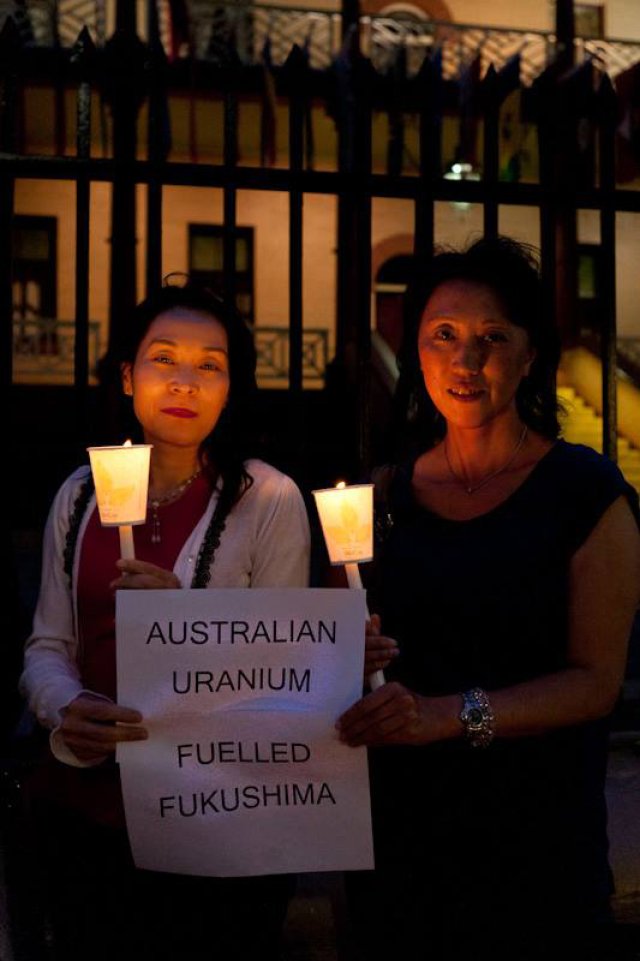
Events were held around the country on March 11 to mark three years since an earthquake and subsequent tsunami laid waste to the north-east coast of Japan. The earthquake and tsunami disasters killed 18,600 people and about 2700 bodies have never been recovered.
The disaster damaged the Fukushima nuclear power plant, whose cooling systems failed, leading to a series of explosions and catastrophic meltdowns in three reactor cores. More than 150,000 people who were forced to evacuate the area are still unable to return to their homes in the Fukushima region.
Since the disaster, protests against nuclear power have continued in Japan and around the world.
In Tokyo, 32,000 people marched on March 9 demanding an end to nuclear power. In Australia, actions were held in Nimbin, Wollongong, Sydney, Brisbane, Gold Coast, Cairns, Perth, Fremantle, Melbourne, Adelaide and Darwin to mark the three-year anniversary of the disaster.
In Wollongong, more than 60 people attended a screening of the film Radioactivists which explores the development of the anti-nuclear movement in Tokyo in the wake of Fukushima.
In Sydney, Uranium Free NSW organised a screening of Surviving Japan on March 9 and held a commemoration vigil in Martin Place on March 11.
At many of these gatherings, banners were unfurled bearing the slogan “Our Uranium Fuelled Fukushima” which highlighted Australia’s role in the global uranium trade.
A Senate Joint Standing Committee inquiry in October 2011 confirmed the presence of Australian uranium in the Fukushima Daiichi nuclear power plant.
Nevertheless, the Barry O’Farrell government overturned a 26-year legislative moratorium on uranium exploration in NSW in 2012.
Uranium Free NSW was formed to fight against the beginning of uranium mining in the state. Activist Sakyo Noda, a member of the group, said: “Here in New South Wales and across Australia our opportunity and our responsibility is to stop another Fukushima by keeping uranium in the ground.”
Anti-uranium campaigners in NSW and around Australia have been supporting the struggle of Aboriginal traditional owners in the Northern Territory who are fighting the proposed construction of a nuclear waste dump at Muckaty, 120 kilometres north of Tennant Creek.
March 13 marked two years since the introduction of the draconian National Radioactive Waste Management Act.
This gives a federal minister the power to override state and territory laws that might hinder the building of a waste dump and provides sweeping exemptions to environmental protection laws, Aboriginal heritage protection legislation and rights of appeal.
Traditional owner Penny Phillips said: “People are upset that the new government is pushing ahead, but we are not going to stop fighting.”
The Australian uranium trade already contributes to the global problems of nuclear waste, radioactive contamination and nuclear weapons by exporting this deadly substance to Japan and other countries including nuclear weapons states.
Three years since Fukushima, it is time to renew efforts to end the trade and heal the wounds it has already created in our earth, in our bodies and in our communities.